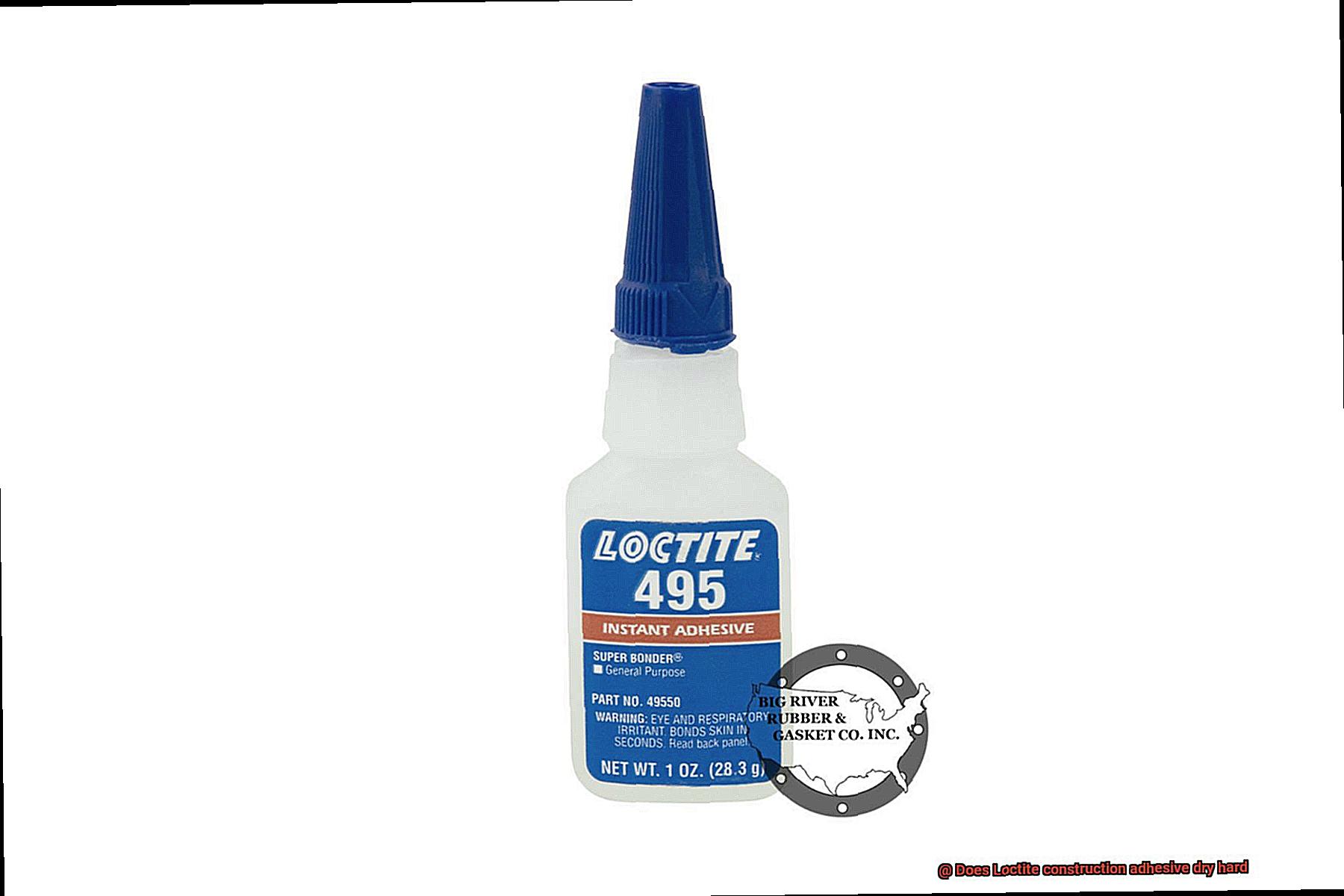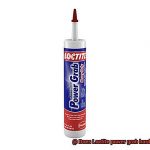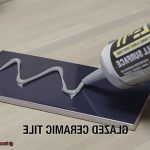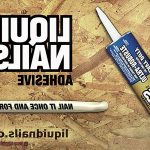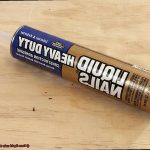Ready to dive into the world of Loctite construction adhesive and find out if it dries hard? We know how important it is to have a strong and long-lasting adhesive, whether you’re a DIY pro or a professional contractor.
That’s why we’re here to answer your burning question: does Loctite construction adhesive dry hard? In this article, we’ll take a closer look at the drying characteristics of Loctite construction adhesive and explore its durability.
Let’s get started.
The Drying Process of Loctite Construction Adhesive
Contents
- 1 The Drying Process of Loctite Construction Adhesive
- 2 Factors that Affect the Drying Time of Loctite Construction Adhesive
- 3 How Long Does it Take for Loctite Construction Adhesive to Dry?
- 4 The Hardness of Dried Loctite Construction Adhesive
- 5 Benefits of Using Dried Loctite Construction Adhesive
- 6 Flexibility of Dried Loctite Construction Adhesive
- 7 Preventing Cracks and Fractures in Bonded Materials with Loctite Construction Adhesive
- 8 Conclusion
The drying process of Loctite construction adhesive is a fascinating journey that transforms a liquid substance into a solid bond. It’s a two-step dance between chemistry and physics, with each phase playing a crucial role in the adhesive’s strength and durability.
Step one: initial curing. As soon as you apply Loctite construction adhesive, it starts to react with the moisture in the air or the materials being bonded. This reaction is like a chemical handshake, forming the foundation of the bond. Within the first 24 hours, this initial curing takes place, giving the adhesive its first taste of strength.
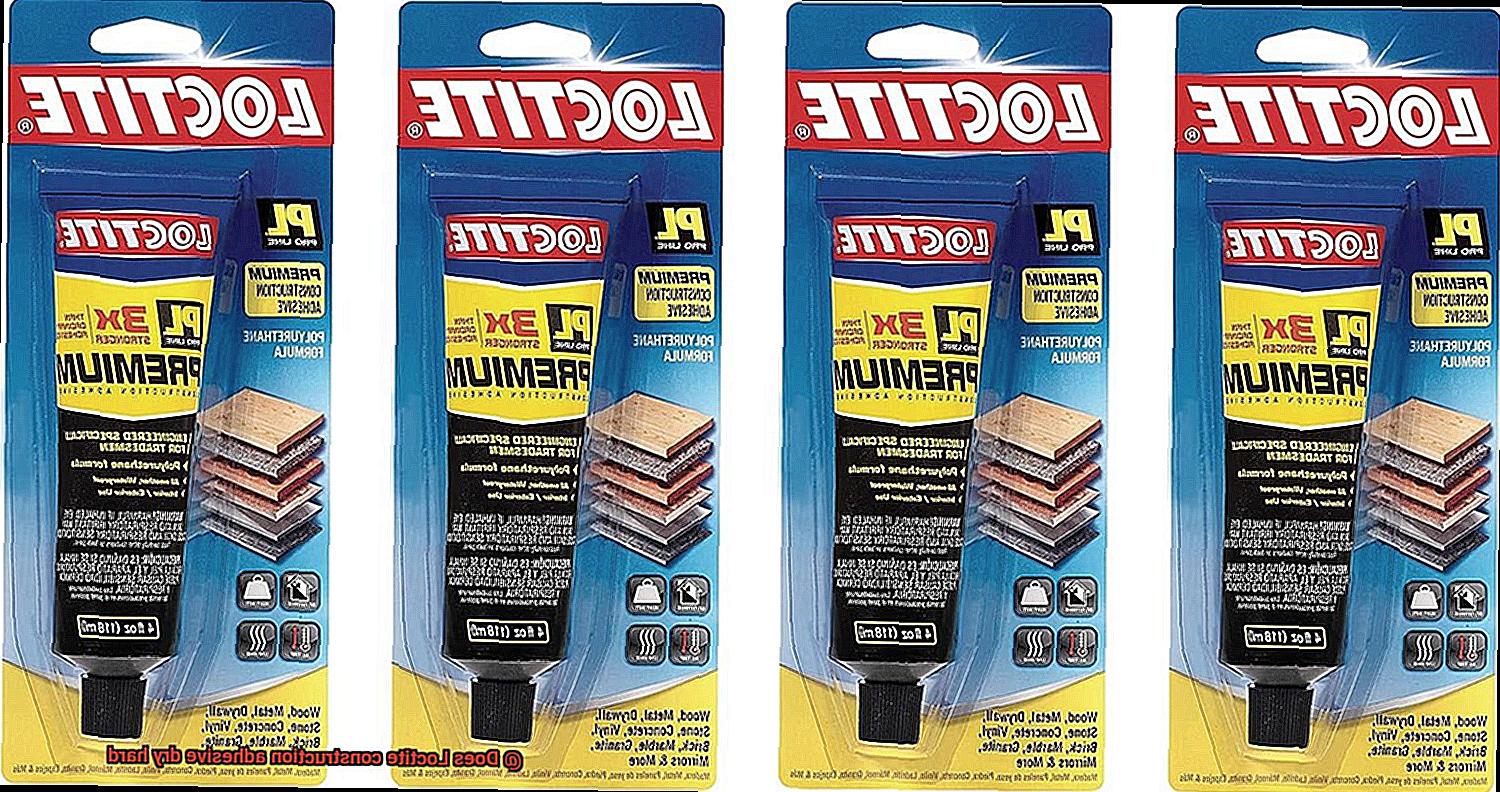
But don’t be fooled by appearances. Although the adhesive may feel dry to the touch after this phase, it hasn’t reached its full potential yet. It needs time to grow and mature, like a seedling becoming a mighty oak. Waiting for the adhesive to fully cure is essential for achieving maximum bonding strength. Depending on factors like temperature, humidity levels, and the thickness of the adhesive layer, this can take anywhere from 24 to 48 hours.
Step two: final drying. Once the adhesive has fully cured, it enters the final act of transformation. This is the moment when any remaining moisture in the adhesive evaporates into thin air. Like a magician’s disappearing act, the adhesive becomes more solid and robust with each passing day. The duration of this drying process varies depending on environmental conditions and the thickness of the adhesive layer. It can take several days or even weeks for the adhesive to reach its ultimate dry state.
Throughout this entire process, Loctite construction adhesive displays its versatility. Different types of construction adhesives offer varying drying properties. Some may dry quicker for projects that require immediate results, while others are designed for applications that demand longer drying periods.
To navigate this transformative path with confidence, it’s crucial to consult the product instructions and technical data sheet provided by Loctite. These invaluable resources will guide you through the drying time and recommended curing conditions for each specific adhesive.
Once fully dried, Loctite construction adhesive stands proud and strong. Its bond is unyielding, capable of withstanding the harshest environmental conditions and the weightiest loads. Whether you’re working on a DIY project or a professional construction job, trust Loctite to deliver a bond that lasts.
Factors that Affect the Drying Time of Loctite Construction Adhesive
Glue may seem straightforward, but behind its simplicity lies a complex science. Ever wondered what affects the drying time of Loctite construction adhesive? Let’s uncover the secrets. Temperature, humidity, substrate material, application thickness, ventilation, and adhesive type all influence drying time. Join us as we explore the captivating world of glue.
Temperature:
Temperature is crucial for drying Loctite adhesive. Higher temperatures accelerate solvent and moisture evaporation, speeding up drying. Lower temperatures slow down this process. To achieve optimal drying time, maintain the recommended temperature range specified by Loctite.
Humidity:
Humidity affects drying time. High humidity prolongs drying as excess moisture hinders curing. Proper ventilation and airflow facilitate moisture evaporation, promoting faster drying. Dry climates or low humidity areas promote quicker drying due to the absence of moisture.
Substrate Material:
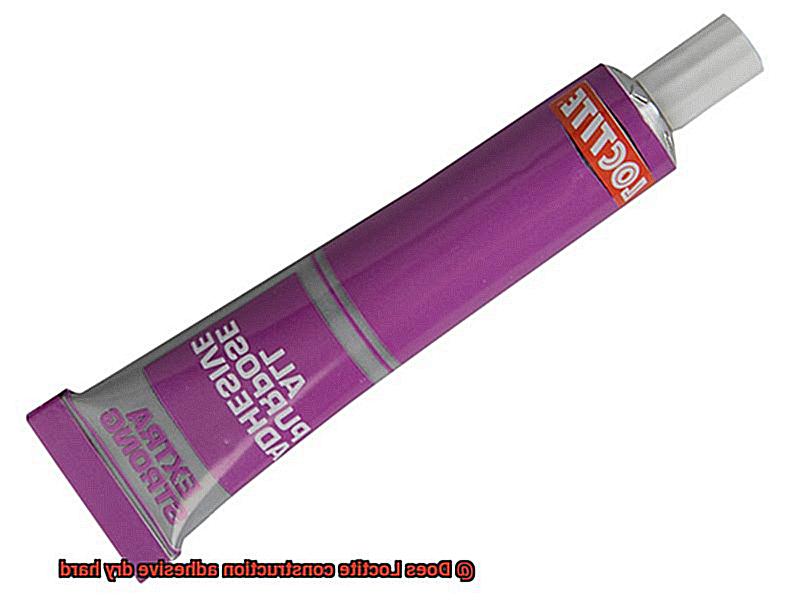
The material being bonded influences drying time. Porous materials like wood or concrete absorb adhesive, resulting in longer drying times. Non-porous materials like metal or glass allow for faster drying. Understanding substrate properties helps estimate drying time more accurately.
Application Thickness:
Adhesive thickness affects drying time. Thicker layers require more time for solvents and moisture to evaporate, extending drying time. Follow manufacturer instructions for optimal application thickness.
Ventilation:
Adequate ventilation expedites drying time. Good airflow removes moisture and solvents from the adhesive, promoting faster drying. Insufficient ventilation prolongs drying and compromises bond strength. Work in well-ventilated areas or use fans and air circulation systems.
Adhesive Type:
Different adhesives have varying drying times. Some variants dry faster depending on their intended applications. Choose the correct Loctite adhesive for your project to achieve desired drying time.
How Long Does it Take for Loctite Construction Adhesive to Dry?
Today, let’s delve into the world of Loctite construction adhesive and unravel the mysteries of its drying time. If you’ve ever found yourself anxiously waiting for glue to dry, wondering if it’s safe to move forward with your project, then this is the blog post for you.
Loctite offers different types of construction adhesives, each with its own specific drying time. But for our purposes, let’s focus on the standard drying time, which is around 24 hours. Now, I can already hear the groans of impatience. Trust me, I feel your pain. But hold on tight, my glue-loving friends, because there are a few factors that can influence the actual drying time.
Temperature plays a significant role in how quickly Loctite construction adhesive dries. Higher temperatures can speed up the process, while lower temperatures can slow it down. So if you’re working in a chilly workshop or tackling a winter project, be prepared for a longer wait. On the flip side, if you’re basking in the heat of summer, your glue might dry faster than you can say “bonded.”
Humidity is another factor that affects drying time. High humidity levels can extend the drying time of Loctite construction adhesive, while low humidity levels can give it a little boost. So before you start gluing, keep an eye on that weather forecast and choose a day with optimal humidity conditions.

The materials you’re working with also come into play. Porous materials like wood or concrete can absorb some of the adhesive, which means it might take a bit longer to dry. On the other hand, non-porous materials like metal or glass won’t absorb the adhesive as much, so they may dry faster. Keep this in mind when planning your project timeline.
Now, here’s a pro tip for you: while the adhesive may feel dry to the touch within a few hours, it doesn’t necessarily mean it’s fully cured. To ensure optimal bonding strength, it’s best to follow the manufacturer’s instructions and give it a full 24 hours to dry and cure. Trust me, it’ll be worth the wait when you have a rock-solid bond that can withstand whatever comes its way.
So, in conclusion, the drying time of Loctite construction adhesive can vary depending on factors such as temperature, humidity, and material type. While the general guideline is 24 hours, it’s important to consider these factors and follow the manufacturer’s instructions for best results.
The Hardness of Dried Loctite Construction Adhesive
The hardness of dried Loctite construction adhesive is a critical factor to consider when using this powerful bonding agent. The hardness directly impacts the adhesive’s bonding strength and its ability to withstand external forces. To measure the hardness of dried Loctite construction adhesive, the widely used Shore hardness scale is employed. This scale quantifies the material’s resistance to indentation, with higher values indicating greater hardness. Generally, Loctite construction adhesive dries to a relatively hard consistency, ensuring a solid bond between surfaces. However, it is important to note that the specific hardness of the adhesive may vary depending on the formulation and recommended curing time by the manufacturer.
The hardness of dried Loctite construction adhesive plays a vital role in determining its ability to withstand pressure, impact, and other external forces. While Loctite construction adhesive is designed to be strong and durable, it may not match the hardness of materials like metal or concrete. This is because the adhesive needs to strike a balance between hardness and flexibility. It should be hard enough to provide a reliable bond but also flexible enough to endure movements or vibrations without losing its grip.
To achieve optimal bonding strength, it is crucial to follow the manufacturer’s instructions regarding curing time. This ensures that the adhesive reaches its maximum hardness and delivers the desired level of bonding strength. It is also advisable to test the hardness of dried Loctite construction adhesive on a small sample before using it for larger projects, particularly if the application requires high levels of hardness or flexibility.
Benefits of Using Dried Loctite Construction Adhesive
In the realm of construction, finding a dependable adhesive that can withstand the test of time and deliver exceptional bonding strength is paramount. Look no further than dried Loctite construction adhesive. This formidable adhesive offers a host of advantages that will revolutionize your construction projects. In this article, we will explore the benefits of using dried Loctite construction adhesive and why it should be your go-to bonding solution.
Unmatched Durability:
Dried Loctite construction adhesive forges an unwavering bond resistant to moisture, heat, and vibration. Its unparalleled durability makes it ideal for a myriad of construction applications, including woodwork, metal fabrication, concrete repair, and more. With this adhesive, surfaces remain securely in place even under heavy loads or stressful conditions.
Weathering and Aging Resistance:
Unlike many adhesives that deteriorate over time from weather exposure, dried Loctite construction adhesive remains steadfast against harsh environmental conditions. Whether facing extreme temperatures or relentless UV radiation, this adhesive retains its strength and performance, rendering it perfect for both indoor and outdoor applications.
Chemical and Solvent Resistance:
Dried Loctite construction adhesive is engineered to resist chemicals and solvents, making it suitable for industrial settings or environments with corrosive substances. This attribute ensures that your bonding remains intact even when exposed to harsh elements.
Ease of Use:
Gone are the days of complex installation processes. Dried Loctite construction adhesive is incredibly user-friendly. It can be applied using various methods such as caulking guns or adhesive dispensers, providing flexibility and convenience during application. Additionally, its fast cure time enables efficient installation and assembly.
Time and Cost Savings:
By eliminating the need for pre-drilling or additional hardware like nails or screws, dried Loctite construction adhesive saves you valuable time and effort. This adhesive streamlines the construction process, reducing labor costs, and avoiding potential damage caused by splitting or drilling.
Versatility:
Dried Loctite construction adhesive is a versatile solution that seamlessly bonds different materials together. Whether working with wood, metal, concrete, or other surfaces, this adhesive offers exceptional compatibility, making it an invaluable tool for professionals and DIY enthusiasts alike.
Flexibility of Dried Loctite Construction Adhesive
Flexibility is a crucial characteristic when it comes to construction adhesives. While strength is important, the ability to withstand constant movement or shifting is equally vital. Just imagine the stress that materials like windows, doors, and wooden structures endure on a daily basis. In such cases, you need an adhesive that can adapt and flex without cracking or breaking. Enter dried Loctite construction adhesive.
Once dried, Loctite construction adhesive exhibits an impressive level of flexibility. It acts as a resilient cushion, absorbing and evenly distributing stress. This means that even if the materials bonded together experience movement or vibrations, the adhesive won’t give in. It remains steadfast, preventing any potential damage to the surfaces.
But flexibility goes beyond just movement; it also plays a crucial role in temperature changes. Outdoor applications, for example, expose materials to extreme temperatures that cause expansion or contraction. Fortunately, dried Loctite construction adhesive has the remarkable ability to adapt to these changes. It expands and contracts along with the materials it bonds, ensuring a secure and durable connection.
Furthermore, the flexibility of dried Loctite construction adhesive extends to bonding materials with different coefficients of thermal expansion. Some materials may expand or contract at different rates when exposed to temperature fluctuations. Thankfully, Loctite construction adhesive can accommodate this movement due to its inherent flexibility. As a result, it maintains a strong bond between these diverse materials.
It is important to note that while Loctite construction adhesive does exhibit flexibility when dried, different products within the range may offer enhanced flexibility for specific purposes. To ensure optimal performance and durability, always refer to the product specifications and guidelines provided by Loctite.
Preventing Cracks and Fractures in Bonded Materials with Loctite Construction Adhesive
Imagine putting your heart and soul into a DIY project, diligently bonding materials together with Loctite construction adhesive, only to be dismayed by the emergence of a tiny crack. But worry not, my fellow glue enthusiasts, because today we will explore the world of preventing cracks and fractures in bonded materials using the power of Loctite construction adhesive.
Prepare the Surface:
Before applying the adhesive, ensure that your surfaces are pristine. Clear away any dirt, moisture, or grime by using a suitable cleaner or solvent. Don’t forget to meticulously dry the surfaces to maximize bond strength.
Rough It Up:
Smooth or glossy surfaces require a little extra love when it comes to bonding. Grab some sandpaper and gently roughen up those surfaces. This simple step creates more grip for the adhesive, reducing the risk of cracks.
Apply with Precision:
During the application process, ensure an even distribution of the adhesive. Going overboard can create weak spots that may cause cracks later on. Follow the manufacturer’s instructions regarding application rate and method – they are the experts.
Patience Pays Off:
Now comes the hard part – waiting for the adhesive to cure. Loctite construction adhesive typically requires 24 to 48 hours for full curing, depending on factors like temperature and humidity. During this time, refrain from subjecting the bonded materials to excessive stress or movement that could result in cracks.
Mind the Temperature:
Extreme temperatures and sudden fluctuations can wreak havoc on bonded materials. To prevent cracks, store and use Loctite construction adhesive within the specified temperature range. This ensures optimal performance and durability.
Choose Wisely:
Not all adhesives are created equal. Loctite offers different formulations tailored for various materials like wood, metal, concrete, or plastic. Selecting the right adhesive for your specific material guarantees a strong and long-lasting bond.
Vigilance Is Key:
Regular inspection and maintenance are crucial to catching any signs of cracking or weakening in your bonded materials. By addressing these issues promptly, you can reinforce the bond before it worsens.
uBWetxzqnIs” >
Conclusion
In conclusion, Loctite construction adhesive dries hard, but the level of hardness may vary depending on the formulation and recommended curing time by the manufacturer. The drying process is a two-step journey that involves initial curing and final drying. Within the first 24 hours, the adhesive undergoes initial curing, laying the foundation for a strong bond. However, it’s important to note that although it may feel dry to the touch at this point, it hasn’t reached its full potential yet. It needs time to fully cure and mature, which can take anywhere from 24 to 48 hours.
Several factors can influence the drying time of Loctite construction adhesive. Temperature, humidity, substrate material, application thickness, ventilation, and adhesive type all play a role. Higher temperatures and lower humidity levels can speed up drying, while porous materials or thicker adhesive layers may require more time to dry.
Once fully dried, Loctite construction adhesive showcases unparalleled durability and resistance to weathering, aging, chemicals, and solvents. Its reliability is unmatched in various applications. Not only is it easy to use but also offers significant time and cost savings by eliminating the need for additional hardware.
The flexibility of dried Loctite construction adhesive allows it to withstand movement and temperature changes without cracking or breaking. This ensures that bonded materials stay intact even in challenging conditions.
To ensure optimal results with Loctite construction adhesive, proper surface preparation is crucial. Applying the adhesive with precision and allowing sufficient curing time are essential steps in achieving a strong bond. Additionally, paying attention to temperature conditions and selecting an appropriate adhesive for your specific material are key considerations. Regular inspection and maintenance of bonded materials will help prevent cracks or fractures over time.
Overall, Loctite construction adhesive delivers exceptional strength and endurance in even the harshest conditions.

